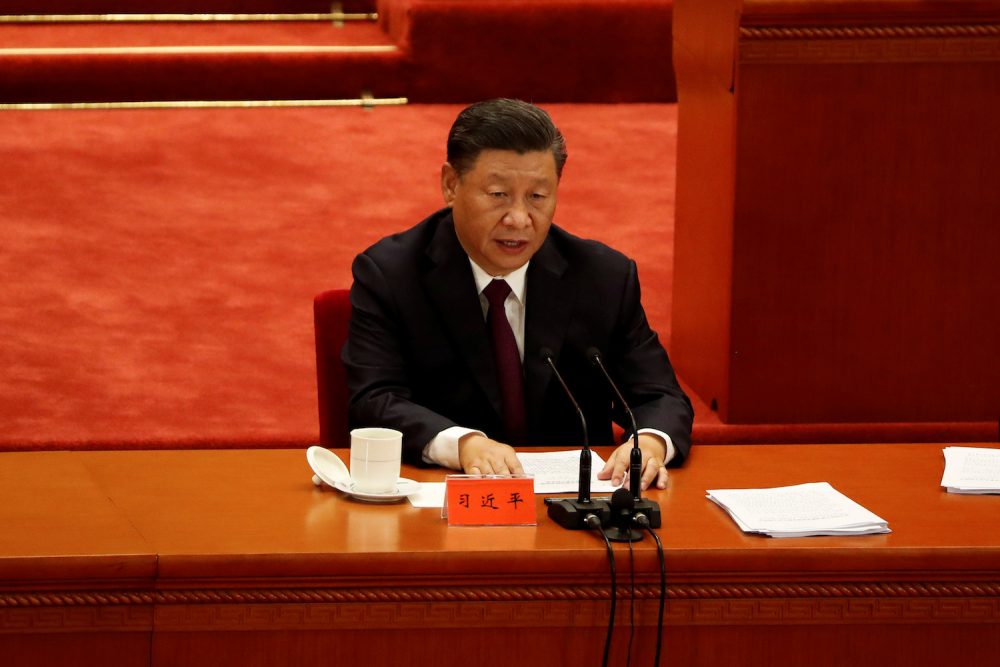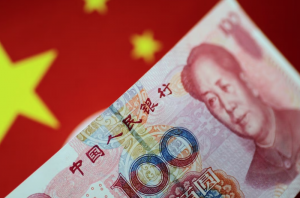China’s “dual circulation” policy framework, first announced in the May 2020 Politburo meeting and reiterated in its meeting in July, is the latest strategy to counter global volatility and sustain domestic growth.
It reflects Beijing’s belief that China has entered a period of increasing global uncertainty and geopolitical hostility that, ironically, will create opportunities for China as the US’ global leadership flounders.
The DC framework has two elements: “external” and “internal” circulations. The external circulation in China’s policy thinking is a paradigm focusing on the US as the global demand hub, which is built on globalisation and reflects the US’s post-World War global leadership and international cooperation.
But this model is failing, in China’s view, due to the withdrawal of the US from the global stage.
This has led China to believe that de-globalisation, leading to economic de-coupling and breaking up of the global supply chains, had become a secular trend that would threaten its long-term stability.
Rising geopolitical tensions and exogenous shocks such as Covid-19 have aggravated this global structural change. Hence, it can no longer rely on global integration as a growth driver; it must focus on domestic demand, or the internal circulation, to hedge against external risks.
China’s new worldview sees itself moving into a new paradigm where the global system would be divided into three main regions – Asia, North America and Europe – with each region led by a super-regional power.
This will lead to the rise of regionalism with strong intra-regional economic linkages on the back of de-globalisation with weak inter-regional linkages, in my view. The rest of the world will fit in somewhere among these regions.
China also sees its internal circulation sit in the centre of Asia, engaging regional and global capital, financial and technological markets for enhancing domestic growth and driving regional growth, hence, the dual circulation strategy.
Import substitution and supply-chain stabilisation
Arguably, the DC policy is Beijing’s effort to balance between self-sufficiency and internationalisation to deal with an increasingly volatile world. It strives to engage global forces, including capital and technology, to gain advantages for domestic development while simultaneously boosting indigenous capabilities to minimise the impact of global volatility on the domestic system.
However, reducing reliance on the global economy does not reflect a loss in China’s competitiveness. It has still gained shares of global export markets, even though it has lost some market share in the US due to the trade war.
In recent years, China’s changing role in global trade has prompted changes in the global supply-chain structure and reshuffled country winners and losers. China’s move to reduce its reliance on global trade will aggravate this disruptive force.
The external circulation is not just about China’s exports. It also encompasses China’s imports. And this is linked to the internal circulation through reducing dependence on certain imports and boosting indigenous capabilities to counter export controls by the US and its allies.
In the short-term, the policy efforts are focused on import substitution, especially in the semiconductor industry that is under increasing US sanction pressure, and redirection of Chinese outbound tourist spending back to China.
Crucially, stabilisation of supply chains lies in the heart of the internal circulation. Since China’s recovery from Covid-19 in April, Beijing has created a “heads of industry value chains” system to supervise local governments to identify local firms and technologies critical to the industry value chains and boost their development.
Local governments are asked to adopt bespoke policies to finance public investment in these industrial value chains. The investment focuses on technologies in integrated circuits, 5G, electric cars, biomedicine, cloud computing and artificial intelligence (AI).
In this effort, Beijing has asked state-owned enterprises (SOEs) to take a leading role. President Xi has placed great importance on the SOEs to play a strategic role in China’s long-term economic transformation. He has significantly enhanced the Party’s control over the state sector since 2013.
In my view, this supply-chain stabilisation effort is an evolution of China’s structural reform motto that the market is a strategic tool for making changes under the guidance of the Communist Party.
Now that the Party has a tight grip on the SOEs, it can mobilise their resources more easily than ever before, including in implementing Beijing’s dual circulation strategy.
China’s supply side reform, decoupling
The DC policy is reminiscent of China’s supply side reform that started in 2015, which most observers dismissed in the beginning as a set of vague and vacuous policy statements that would lead to nowhere. But these uninformed views were proven wrong.
In the following years, Beijing had shown persistent reform efforts to cut excess industrial capacity – notably in steel and cement, which played a major role in creating bottleneck supply conditions and sent key commodity prices soaring between late 2016 and 2017 – and de-risk the financial sector aggressively, even at the cost of slowing GDP growth.
To fortify the inner circulation, the DC seeks to bolster the strengths and correct the weaknesses of the domestic economy to improve economic resiliency and self-sufficiency.
That means boosting domestic demand while simultaneously finding ways to reduce reliance on external inputs in key areas, notably food, technology and energy. The policy emphasises on import substitution and high-end manufacturing and industrial upgrading to boost domestic growth impetus.
Arguably, the DC was born out of China’s new worldview that decoupling, especially from the US, is not a question of if, but of when and how fast.
The policy is, in my view, a proactive strategy for preparing for a divorce on China’s own terms rather than reactive to what would be imposed on it by external forces.
Far-reaching impacts
While China does not want a total withdrawal from global economic integration, even a small policy shift away from the external circulation could significantly shock global trade and investment flows due to China’s sheer size.
So the DC strategy, if successfully implemented, will have far-reaching effects on the global markets. The internal circulation’s emphasis on high-end manufacturing and technology implies that China might seek to replicate the German manufacturing model.
Indeed, in recent years, China has been squeezing developed economies’ exporters in other markets outside the US and supplying a third of the world’s demand for intermediate goods.
This suggests that China is posing an increasing challenge to the industrialised economies, with its production scale beginning to disrupt a range of new market segments, as has happened with solar and lithium batteries in recent years.
The strategy of redirecting Chinese consumers’ overseas spending (US$250 billion a year just by outbound Chinese tourists) to the domestic market is clearly positive for domestic retailers.
It also implies that preferences of domestic consumers will become more important than foreign consumers in shaping corporate decisions. This makes “investing in China for China” an increasingly important force in affecting FDI decision.
To switch Chinese tourists’ spending abroad back to China, Beijing has cut import duties for many tourist favourite products to narrow the tax gap, which is a major tourist spending incentive.
It also plans to open up more duty-free stores and zones, like the Hainan duty-free zone established in June 2020, to attract domestic and foreign tourists.
The pandemic has enabled China to speed up this expenditure-switching by grinding international travel to a halt. So companies catering for Chinese buyers who previously bought items abroad will benefit.
But this will be bad news for companies and other Asian countries whose retail business depends on Chinese tourists.
Experience shows that China’s top-down policies mean business. So it should be rewarding to follow the government’s lead when investing in China.
This also argues for an investment strategy to cut exposure to firms that have high overseas exposure, such as consumer electronics, and increase allocation to companies and sectors that are related to state investment in the priority sectors on the DC policy agenda, such as aerospace, defence and domestic high-tech industries.
From a macro perspective, the DC strategy could help China’s equities better withstand external market volatility and, thus, attract global investors seeking to diversify returns.
As China steps up efforts to substitute imports and boost self-sufficiency, domestic brands in technological and financial innovation, industrial consolidation and consumer-upgrading should drive the long-term trend of China’s equity market.
• Chi Lo is a Senior Economist for Greater China at BNP Paribas Asset Management.
This page was upgraded on January 17, 2022 for style purposes.
























